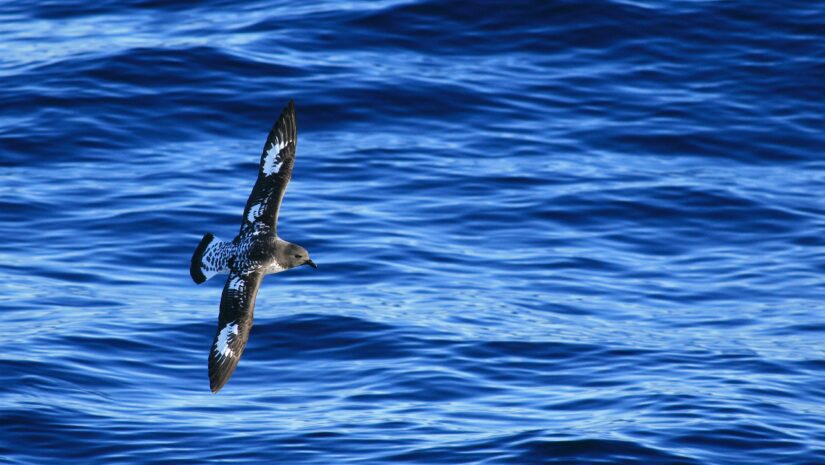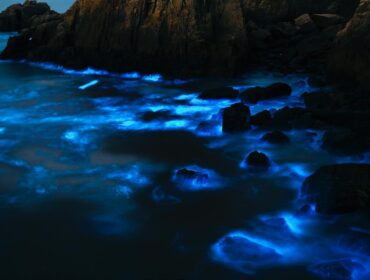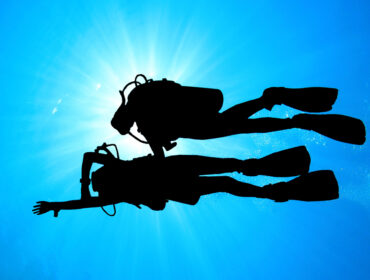When we think of underwater wildlife, our minds often go straight to fish or coral reefs. However, there’s a whole world of birdlife under the waves, too, you know! They’re known as “seabirds.”
These unexpected, feathered divers are spectacular swimmers! Frequent divers will tell you that spotting them while scuba diving is a truly unique experience. Let’s dig into the below list of seabirds. Which of these could meet you in your underwater adventures?
1. Cormorants
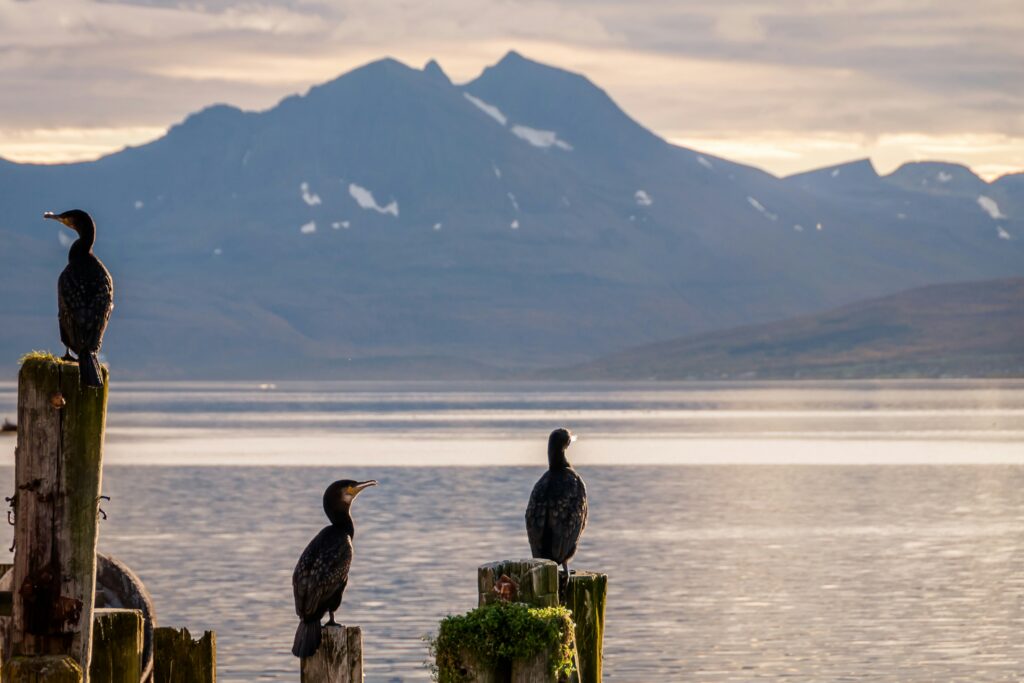
Cormorants like Brandt’s Cormorant can be found along the Pacific coastline of Northern America. These birds are built for diving, for real. They have the right bodies, long necks, and webbed feet that propel them underwater like cute feathered torpedoes.
What’s surprising is: their feathers actually are not waterproof! This might seem like a design flaw, but it’s genius — waterlogged feathers make them less buoyant, allowing them to dive deeper and swim faster in search of fish. They dive from the surface, chasing their prey with impressive agility, and can plunge over 70 meters (230 feet) below!
2. Pelicans
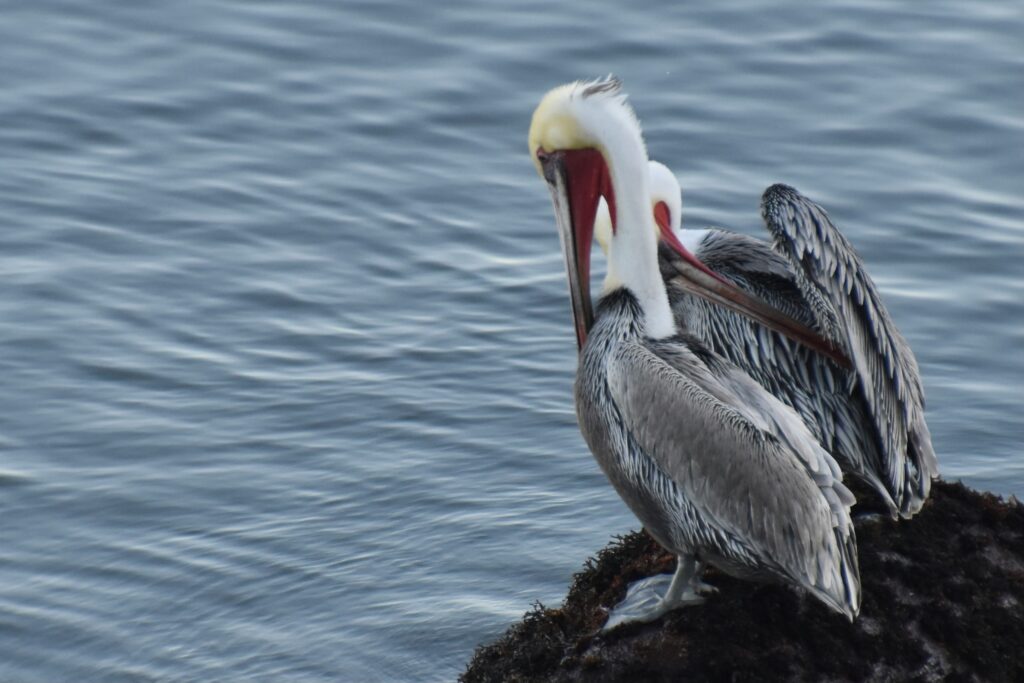
The Brown Pelican, especially common along the coasts of California, is a master of high-altitude acrobatics. These birds have wingspans that reach up to 3 meters (10ft). They drop from heights of up to 30 meters (100 feet), hitting the water with enough force to stun fish up to 1.5 meters (5 feet) deep.
Brown Pelicans scoop up fish in their throat pouches and then float back to the surface, smugly enjoy their catch. Well-deserved!
3. Penguins
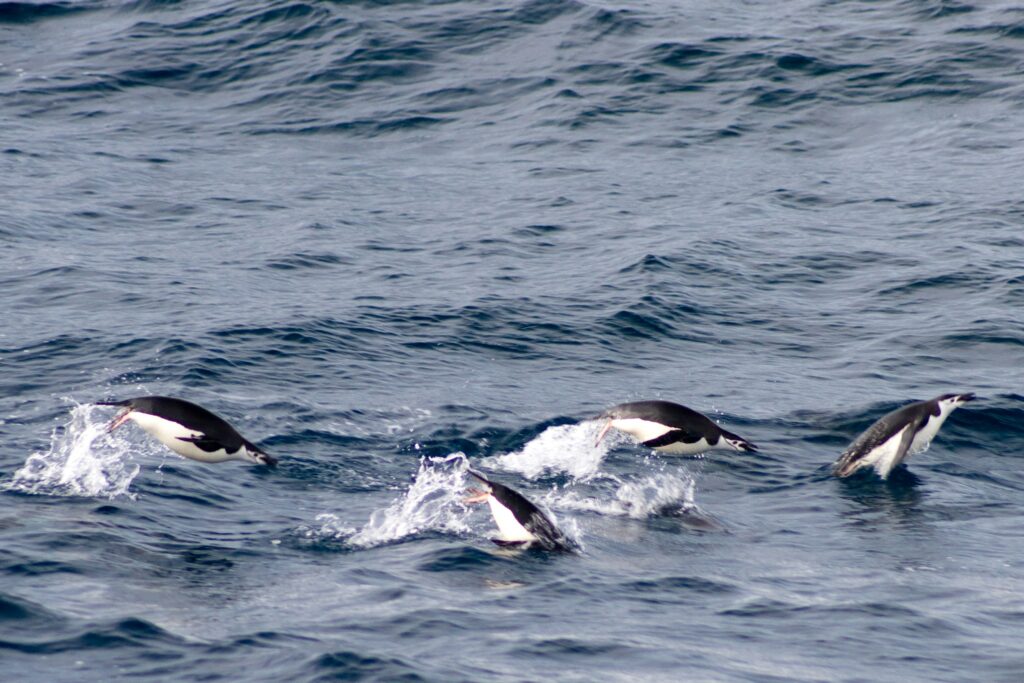
Little Penguins can be spotted around New Zealand and Australia. They’re petite, standing at just over a foot tall (cute!). These little can guys zip through the water at impressive speeds, turning their wings into flippers.
Though they’re stuck in the Southern Hemisphere, there’s a Galápagos penguin that stays somewhere outside the equator. So, they’re the only penguin species to potentially swim in tropical waters.
4. Puffins
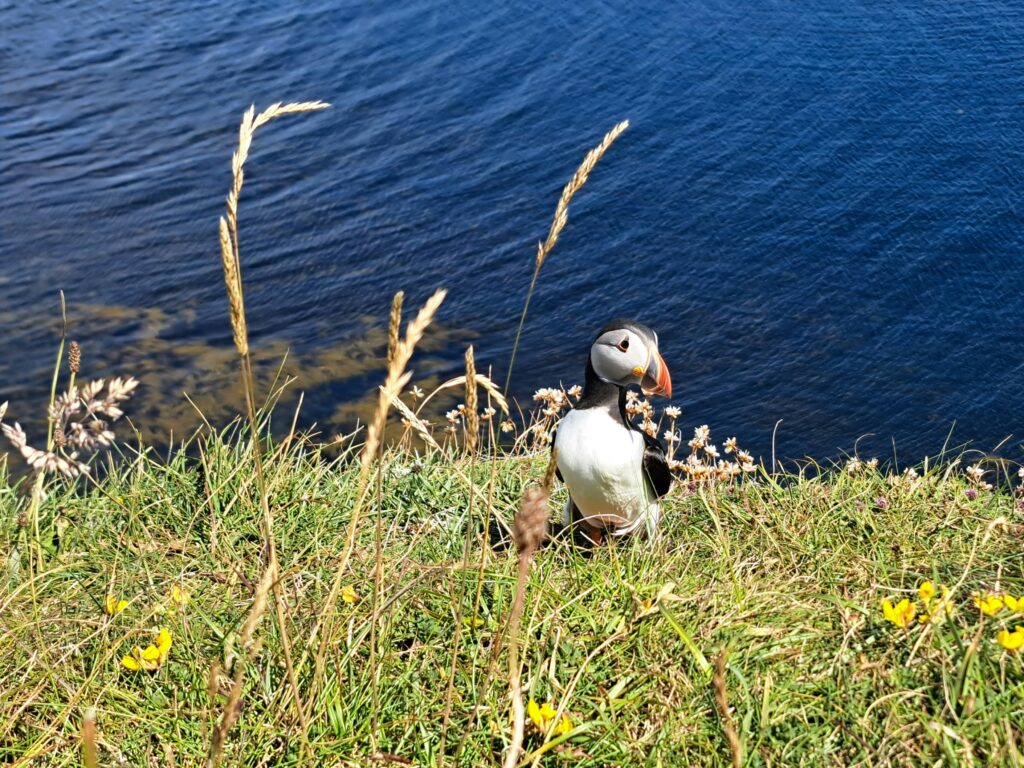
Colorful beaks, expressive eyes, and that waddling gait! Ah, yes, those are Puffins. They’re also known as “sea parrots.” They dive up to 60 meters (200ft) below the surface to chase after prey. They usually go after small fish such as herring or sand eels.
Puffins are incredibly social, often spotted in large colonies across the northern Atlantic. Also, they are particularly abundant in places like Iceland, Norway, and the Faroe Islands. Puffins also nest on cliffs, so divers can sometimes spot them zooming into the ocean from above.
5. Gannets

These large seabirds launch themselves into the water at up to 100 km/h (60mph). Their evolved bodies let them plunge into the ocean and snatch fish before the fish even know what hit them.
You can easily spot them since they tend to hunt in flocks. If you see them in action, you get a front row seat to their dance of synchronized dives and splashes.
6. Shearwaters
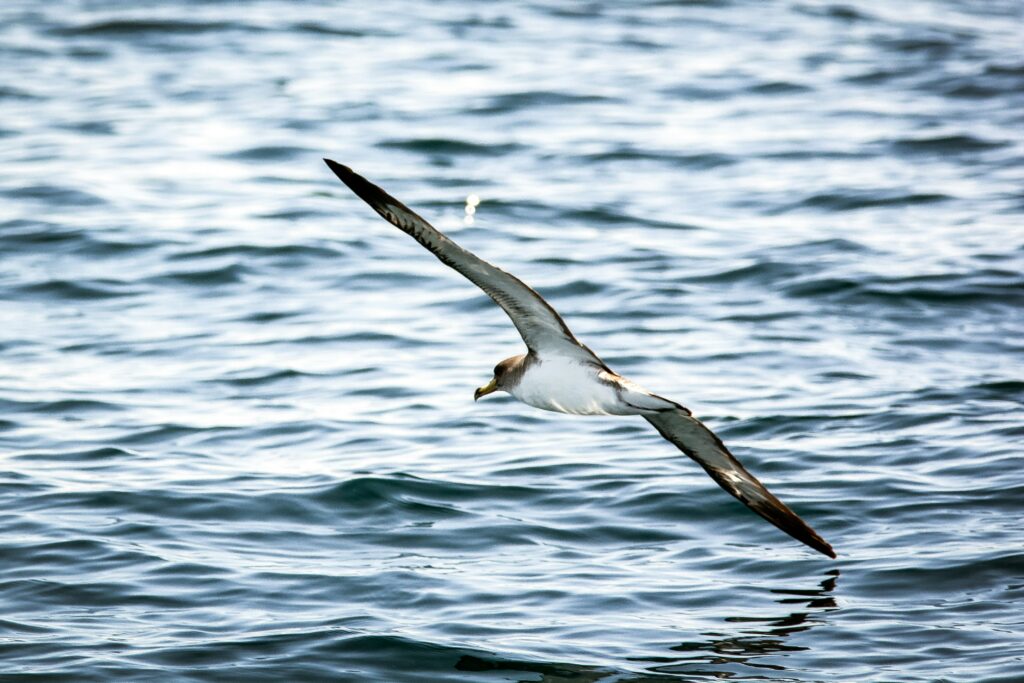
Some Shearwaters travel more than 10,000 miles between breeding and feeding areas. They have to make that journey back and forth!
Unlike the others on this list, Shearwaters have a different style of diving. They skim along the water’s surface, occasionally dipping in to catch small fish or squid. And fun fact: they’ve got a knack for catching the waves just right. That’s why they’re often seen “shearing” the water’s surface (hence their name).
7. Razorbills

Found along rocky coastlines in the North Atlantic, these birds are excellent swimmers and divers. They use their wings to “fly” underwater.
Razorbills can dive up to 60m (200ft) when following prey. Plus, they’re often seen swimming underwater with their wings outstretched, almost like little submarines.
8. Auks
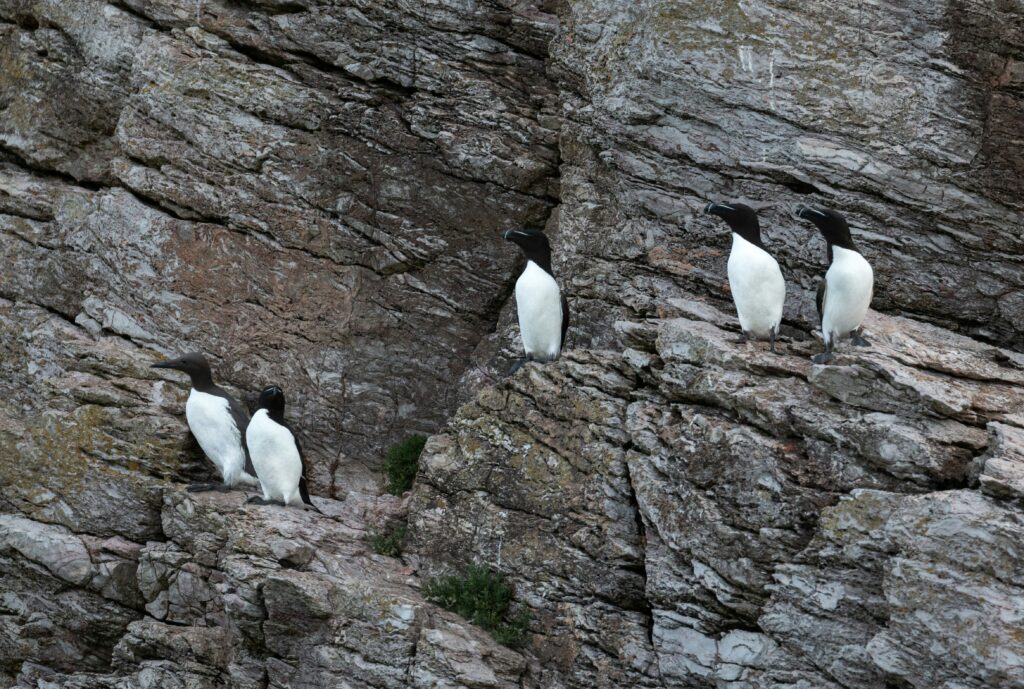
Unlike penguins, most auks can fly in the air. Diving up to depths of around 100 meters (330ft), auks can be spotted in cold northern waters.
Though their swimming technique is impressive, they are not the most graceful fliers in the sky. But still, they can put up a show!
9. Kingfisher
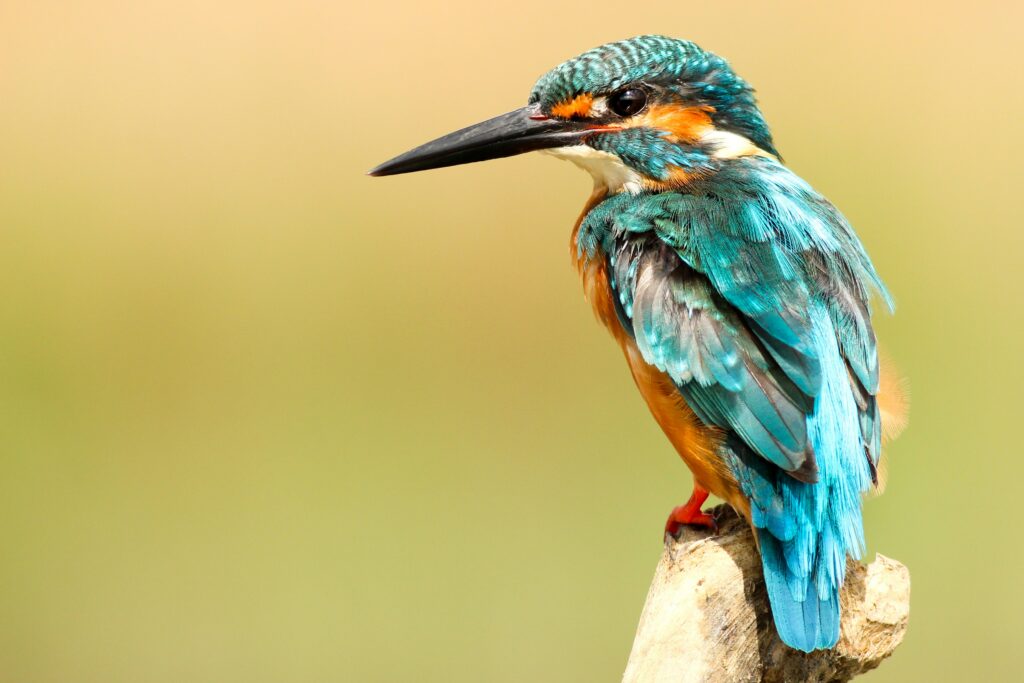
These birds have fantastic aim, which makes sense. They literally plunge from a perch straight into the water like missiles with feathers.
With bright plumage and a dagger-like bill, the kingfisher likes to hover above the water before diving. When they rise back up, they’ll have small fish and aquatic insects between their bills.
One of the most famous species is the Common Kingfisher, which is often spotted around ponds, lakes, and rivers. You might catch one near the shore on a dive.
10. Anhinga
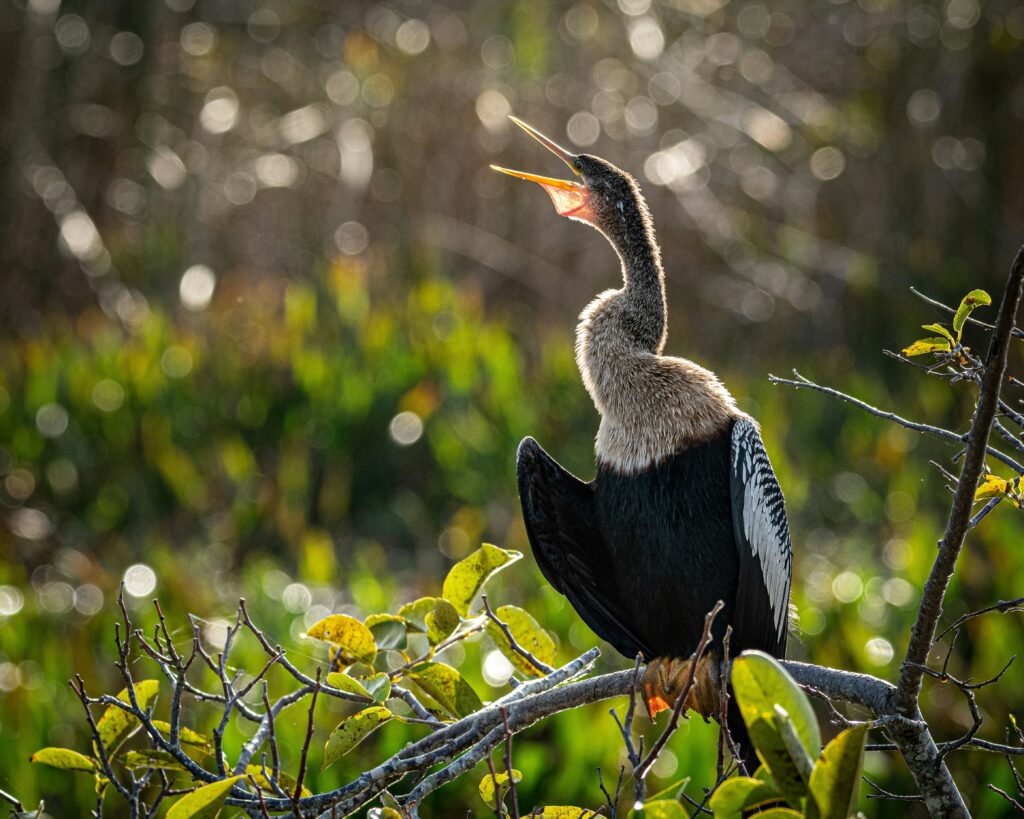
The seabird Anhinga is also known as the “snakebird.” This could be because of its long neck that pokes high above the water, making it look like a snake.
The Anhinga has dense bones, meaning they can stay underwater for longer periods. More time to hunt for food!
11. Long-Tailed Duck
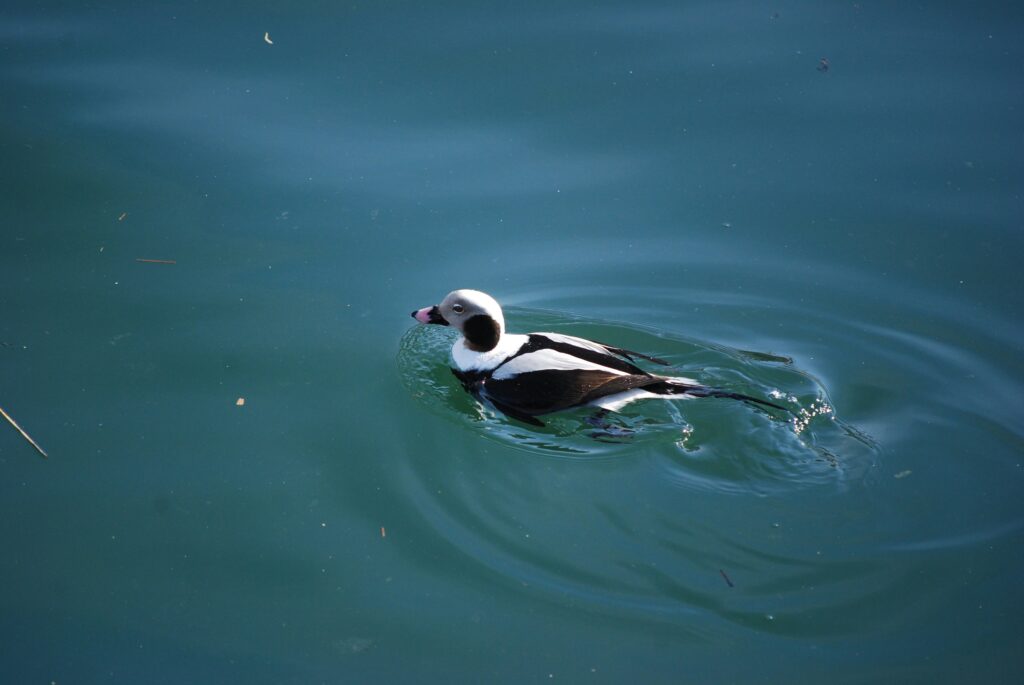
Most frequently spotted in the arctic, the Long-tailed Duck is an impressive cold water diver. It goes 60m (200ft) below the surface to search for crustaceans, mollusks, and small fish. This bird is particularly active in the winter months!
12. Great Crested Grebe

You’ll find seabirds like the Great Crested Grebe in Europe and parts of Asia. They’re not hard to find at all, too. They have a distinctive head crest!
It often dives for fish and aquatic invertebrates in freshwater lakes. Grebes are known for their elaborate courtship dances, which are often as mesmerizing as their diving skills.
13. Osprey

With their keen eyesight, this seabird starts hunting by hovering high above the water. Then, they dive feet-first to snatch fish from just below the surface.
Ospreys don’t submerge fully, though — they just make quick snatches with their sharp talons. You’re likely to spot them near coastal waters or large rivers, particularly in North America and parts of Europe.
14. Black-Footed Albatross
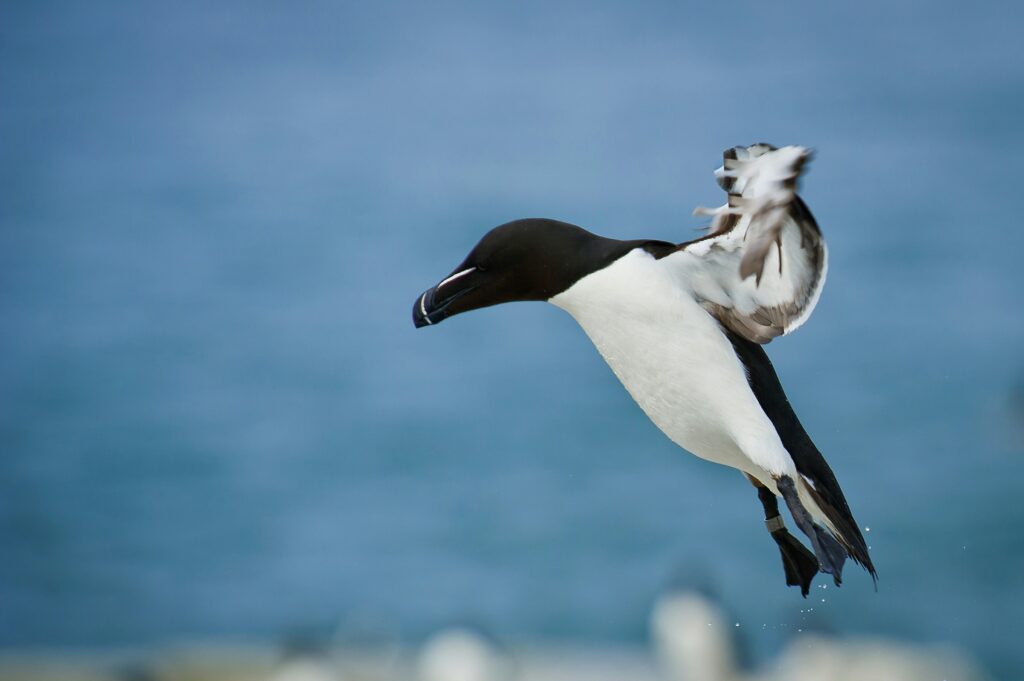
Famous for its endurance, this seabird is mostly seen soaring over the open ocean. Apparently, it barely likes coming to land.
It doesn’t dive as deep as some birds on this list. Instead, it skims the surface for squid and fish. Oh! And it has a remarkable wingspan, with an average length of 2m (around 6.5ft).
15. Red-Throated Loon
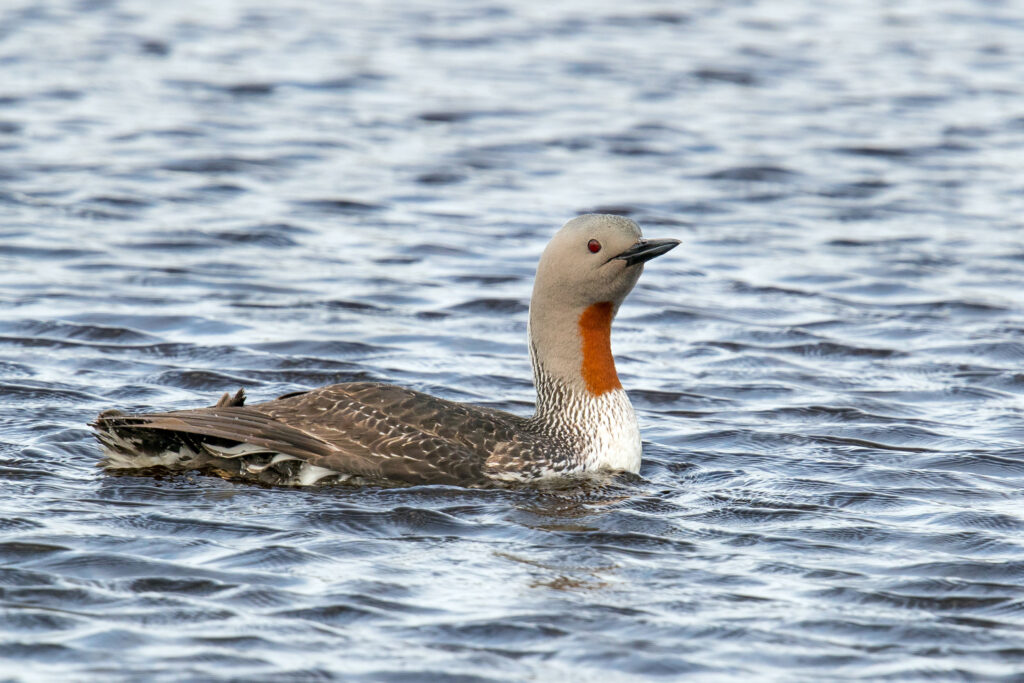
This is a seabird that breeds in Arctic and sub-Arctic regions. It’s a great swimmer but an even better hunter, with lots of experience diving from the surface to catch fish.
This bird is the smallest and lightest of the loons, so they can easily take off directly from the water. When it dives, it often hunts in coastal waters during the winter months!
16. Black Oystercatcher
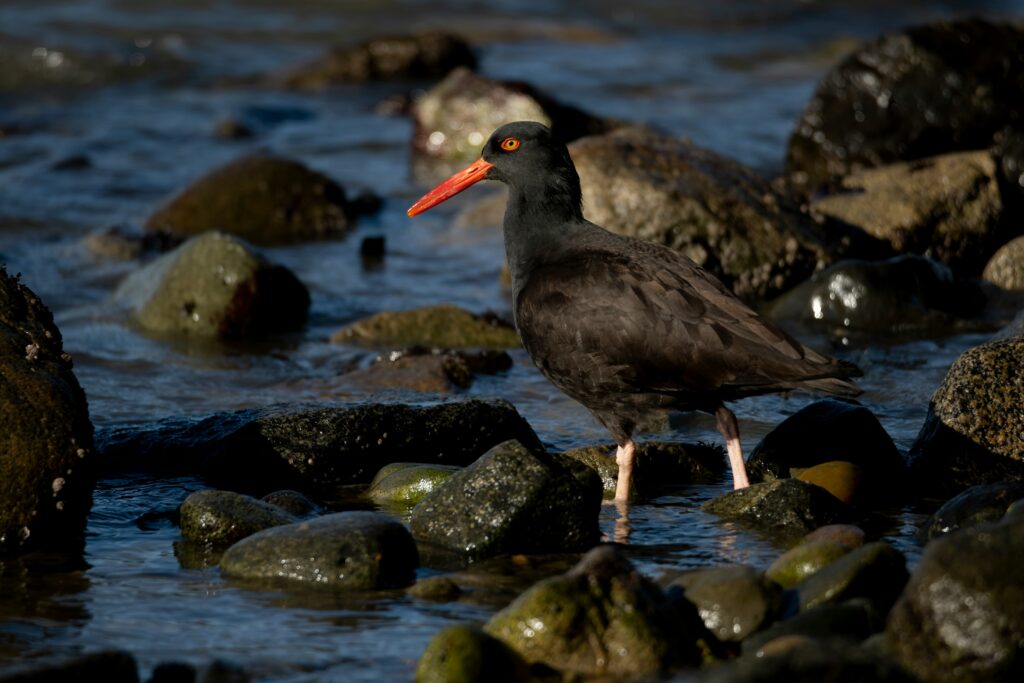
These seabirds are striking, with bright red bills and dark plumage. It’s often seen watching closely over tide pools and rocky crevices, waiting to spot mollusks.
Black Oystercatchers are skilled at prying open shellfish with their powerful beaks. If you want to see them, you can find them along the Pacific coasts of North America.
17. Marbled Murrelet
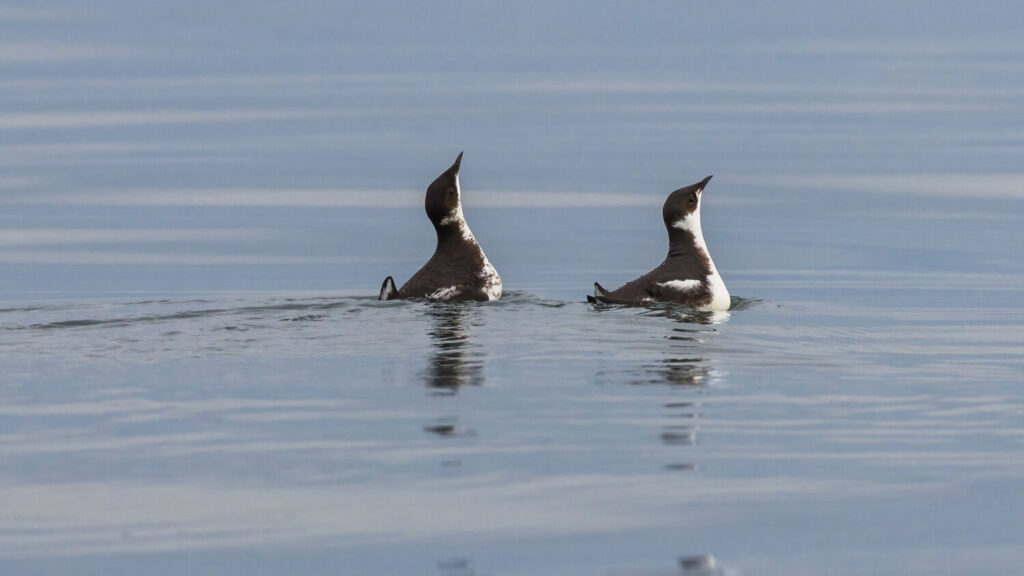
The Marbled Murrelet spends much of its time at sea. But here’s the twist: it nests high up in old-growth forests.
This bird’s diving skills help it reach depths of up to 30m (100ft). Its kind is found along the North Pacific coastline.
18. Arctic Tern
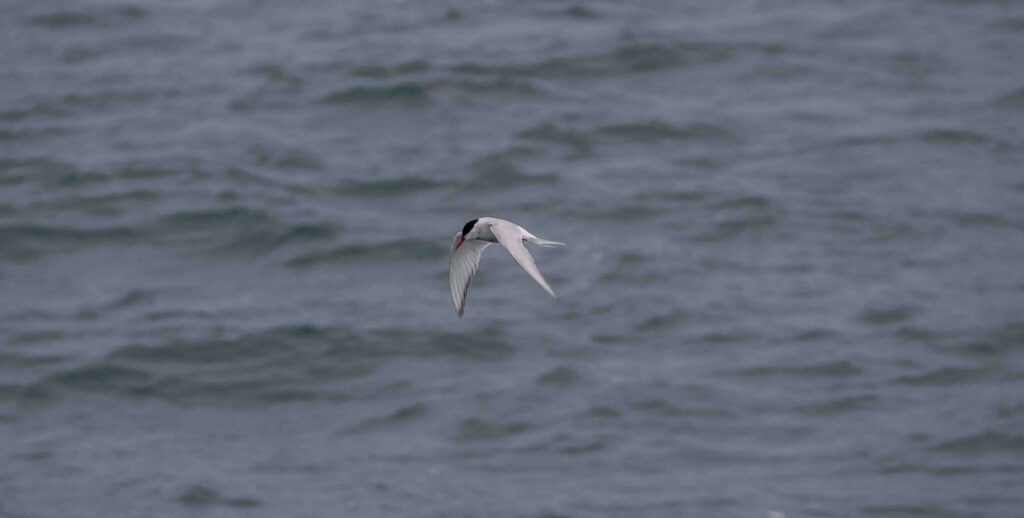
This next seabird on this list holds the record for the longest migration of any bird. It can fly from the Arctic to the Antarctic and back each year (Talk about impressive!).
These birds cover over 70,000 kilometers annually, chasing summer. Because they spend so much time near both poles, their presence in any one location is brief. But don’t worry, go to the far north or far south. If you do, you can get a glimpse of these incredible birds.
19. Long-Tailed Jaeger
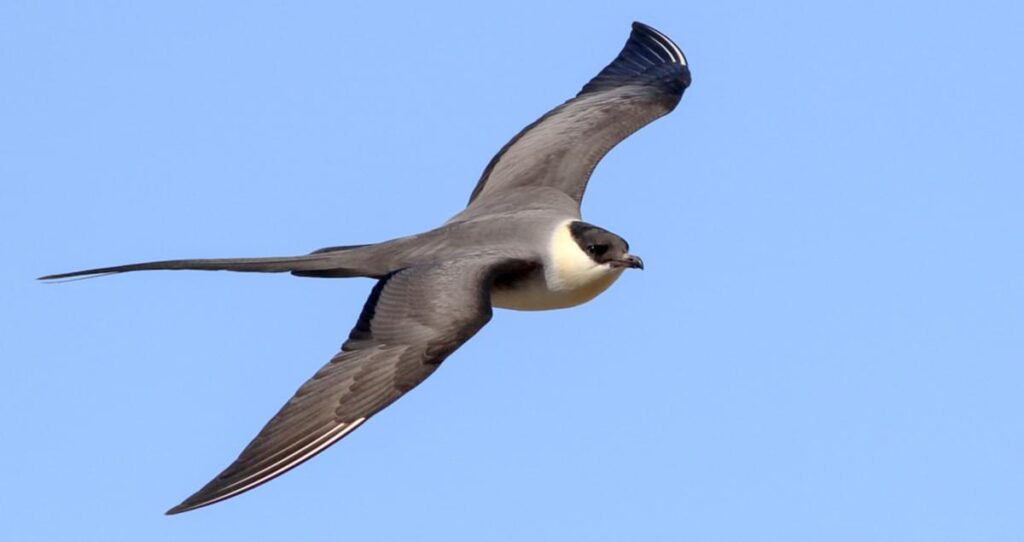
The Long-Tailed Jaeger has two sides. On one side, it leaves you in awe of its beauty with its elegant long tail feathers. On the other, they execute quite the aggressive hunting style.
Found in the Arctic, these birds often steal fish from other seabirds or hunt small fish themselves. Yikes! Their aerial prowess and ability to harass other birds make them an interesting sight for anyone diving or birdwatching up north.
FAQs: Seabirds
No, birds cannot breathe underwater. While they can dive and hold their breath for extended periods, they need to resurface to breathe.
Diving depths vary by species. Cormorants can dive over 70m (230ft), while puffins and penguins can reach depths between 60 and 100m (200-330ft).
Not all seabirds dive for food. Albatrosses, for example, primarily scavenge or catch prey near the water’s surface.
To spot diving birds, dive in areas known for seabird activity, especially near coasts or islands.
Diving birds are generally not dangerous to divers. They are focused on hunting for food and will usually avoid human interaction.
Have fun seeing seabirds!
These seabirds prove that diving is not just for the finned. They’re like a flying circus, swooping in, diving down, and sometimes just passing through on their epic migrations. Who knew that beneath all that soaring grace was a deep love for the underwater world?
So, keep your mask clear and your eyes peeled — you might just spot one of these spectacular seabirds next time you dive!

